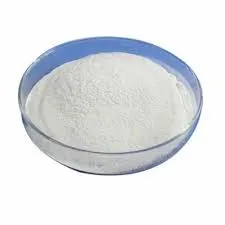
Nov . 14, 2024 04:33 Back to list
hydroxypropyl methyl cellulose solubility
Understanding the Solubility of Hydroxypropyl Methyl Cellulose
Hydroxypropyl methyl cellulose (HPMC) is a non-ionic, water-soluble polymer derived from natural cellulose. It is widely used in various industries, including pharmaceuticals, food, cosmetics, and construction, due to its unique properties such as rheology control, thickening, film-forming, and binding. One of the most critical aspects of HPMC is its solubility, which significantly influences its functionality in different applications. This article aims to provide an overview of HPMC solubility, the factors affecting it, and its implications across various fields.
Characteristics of Hydroxypropyl Methyl Cellulose
HPMC is characterized by its ability to dissolve in cold water, forming a viscous solution. The solubility of HPMC varies depending on its chemical composition, particularly the degree of hydroxypropyl and methyl substitution. Generally, higher hydroxypropyl content enhances solubility in cold water, while increased methyl content can decrease solubility. The ratio of these substituents can also influence the viscosity of the solution, making it essential to select the appropriate HPMC grade for specific applications.
Factors Affecting Solubility
Several factors influence the solubility of HPMC in water
1. Molecular Weight HPMC is available in various molecular weights. Lower molecular weight HPMC grades tend to dissolve more readily in water compared to higher molecular weight grades. This characteristic is crucial for applications requiring rapid solubilization.
2. Temperature Generally, the solubility of HPMC increases with temperature. Heating the water can enhance the dissolution process, allowing for a quicker and more efficient mixing of HPMC.
3. pH Levels Although HPMC is stable across a wide pH range, extreme pH levels (i.e., very acidic or basic conditions) can affect its solubility. It is important to maintain an optimal pH to ensure maximum solubility.
4. Concentration The concentration of HPMC in solution also affects its solubility. At higher concentrations, HPMC can exhibit limited solubility due to the increased viscosity of the solution, which makes subsequent mixing and dissolution more challenging.
hydroxypropyl methyl cellulose solubility

5. Ionic Strength The presence of salts or other ionic compounds in the solution can influence HPMC's solubility. High ionic strength can lead to reduced solubility due to electrostatic interactions.
Applications of HPMC and the Importance of Solubility
The solubility of HPMC is critical for its effectiveness in various applications
1. Pharmaceuticals HPMC is frequently utilized in drug formulations as a binder and a controlled-release agent. Its solubility properties allow for the creation of sustained-release tablets, where the drug is slowly released into the body. The solubility profile determines how quickly or slowly the drug dissolves and is absorbed.
2. Food Industry In the food sector, HPMC is used as a thickener, emulsifier, and stabilizer. Its solubility in cold water is particularly beneficial for instant food products where quick dissolution is required.
3. Cosmetics and Personal Care HPMC is commonly employed in cosmetics as a film-forming agent and for its thickening properties. Its solubility is essential for creating uniform and stable formulations.
4. Construction In the construction industry, HPMC is added to cement and plaster products for its water retention capabilities. Proper solubility ensures consistent performance and workability of these materials.
Conclusion
In summary, hydroxypropyl methyl cellulose is a versatile polymer with significant industrial applications. Its solubility properties are influenced by various factors, including molecular weight, temperature, pH, concentration, and ionic strength. Understanding these factors allows manufacturers to optimize HPMC formulations for specific applications, ensuring functionality and effectiveness. As industries continue to evolve, the demand for HPMC with tailored solubility characteristics will likely grow, highlighting the importance of ongoing research and development in this field. Whether in pharmaceuticals, food, cosmetics, or construction, HPMC remains a critical ingredient that requires careful consideration of its solubility profile to achieve desired results.
-
Versatile Hpmc Uses in Different Industries
NewsJun.19,2025
-
Redispersible Powder's Role in Enhancing Durability of Construction Products
NewsJun.19,2025
-
Hydroxyethyl Cellulose Applications Driving Green Industrial Processes
NewsJun.19,2025
-
Exploring Different Redispersible Polymer Powder
NewsJun.19,2025
-
Choosing the Right Mortar Bonding Agent
NewsJun.19,2025
-
Applications and Significance of China Hpmc in Modern Industries
NewsJun.19,2025







